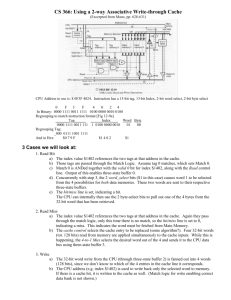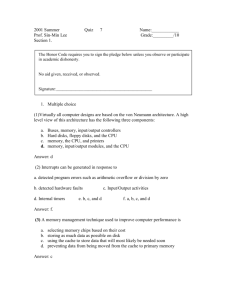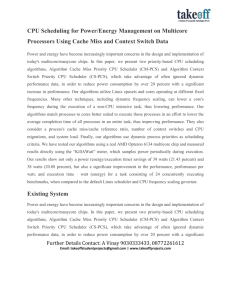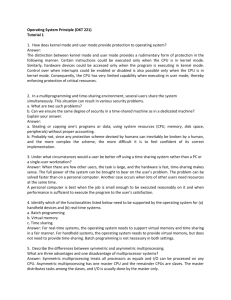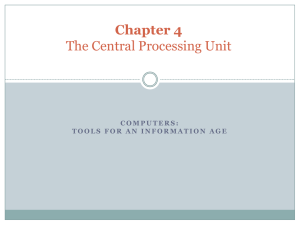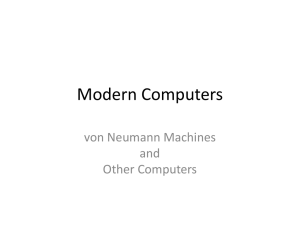WattDB
advertisement
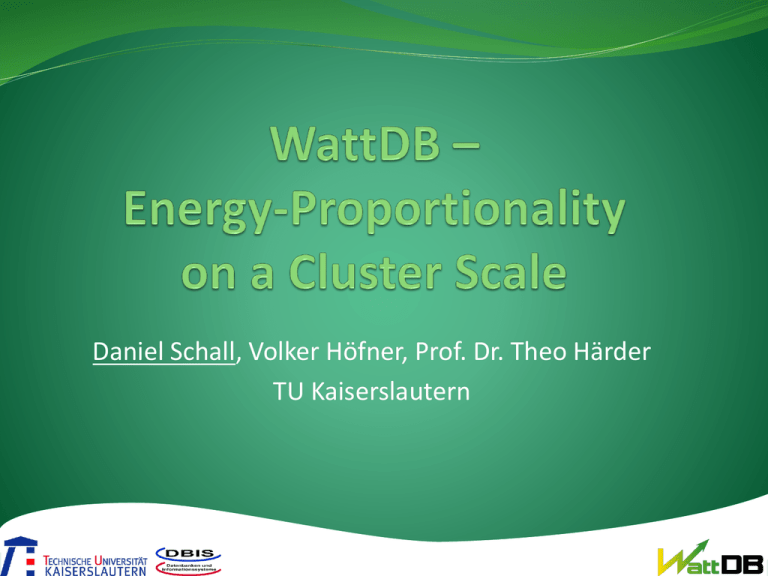
Daniel Schall, Volker Höfner, Prof. Dr. Theo Härder TU Kaiserslautern Outline Energy efficiency in database sytems Multi-Core vs. Cluster WattDB Recent Current Future Work 2 Motivation More and more data Bigger servers In-memory technology Electricity Cost 3 Power Breakdown Load between 0 – 50 % Energy Consumption: 50 – 90%! ‘‘Analyzing the Energy Efficiency of a Database Server“, D. Tsirogiannis, S. Harizopoulos, and M. A. Shah SIGMOD 2010 ‘‘Distributed Computing at Multi-dimensional Scale“, Alfred Z. Spector Keynote on MIDDLEWARE 2008 4 Growth of Main Memory makes it worse Power (Watt) % power@utilization 100 80 60 40 energyproportional behavior 20 0 20 40 60 80 100 % System utilization In-memory data management assumes continuous peak loads! Energy consumption of memory linearly grows with size and dominates all other components across all levels of system utilization Mission: Energy-Efficiency! Energy cost > HW and SW cost Energy Efficiency = Work Energy Consumption ‚‚Green IT‘‘ 7 Average Server Utilization Google Servers: load at about 30 % SPH AG: load between 5 and 30 % 8 Energy Efficiency - Related Work Software Delaying queries Optimize external storage access patterns Force sleep states „Intelligent“ data placement Hardware Sleep states Optimize energy consumption when idle Select energy-efficient hardware Dynamic Voltage Scaling Narrow approaches Only small improvements 9 Goal: Energy-Proportionality Power (Watt) % power@utilization 100 80 2 60 1 40 energyproportional behavior 20 0 20 40 60 80 100 % System utilization 1) reduce idle power consumption 2) eliminate disproportional energy consumption From Multi-Core to Multi-Node Power Core CPU Core CPU Core CPU Core CPU L1Cache Cache L1Cache Cache L1Cache Cache L1Cache Cache Main L2 Cache memory Main L2 Cache memory power@utilization 100 80 60 L3 Cacheswitch 1Gb ethernet Main L2 Cache memory (Watt) % Main L2 Cache memory L1Cache Cache L1Cache Cache L1Cache Cache L1Cache Cache Core CPU Core CPU Core CPU Core CPU 40 20 0 11 20 40 60 80 100 % System utilization A dynamic cluster of wimpy nodes energy-proportional DBMS Load Time 12 Cluster Overview Light-weighted nodes, low-power hardware Each node Intel Atom D510 CPU 2 GB DRAM 80plus Gold power supply 1Gbit Ethernet interconnect 23 W (idle) - 26 W (100% CPU) 41 W (100% CPU + disks) Considered Amdahl-balanced Scale down the CPUs to the disks and network! 13 … 14 Shared Disk AND Shared Nothing Physical hardware layout: Shared Disk every node can access every page local vs. remote latency Logical implementation: Shared Nothing: data is mapped to node n:1 exclusive access transfer of control Combine the benefits of both worlds! 15 Recent Work SIGMOD 2010 Programming Contest First prototype distributed DBMS BTW 2011 Demo Track Master node powering cluster up/down acc. to load SIGMOD 2011 Demo Track Energy-proportional query processing 16 Current Work Incorporate GPU-Operators improved energy-efficiency? more tuples/Watt? Monitoring & Load Forecasting For management decisions act instead of react Energy-Proportional Storage storage needs vs. processing needs 17 Future Work Policies for powering up / down nodes Load distribution and balancing among nodes Which use cases fit for the proposed architecture, which don‘t? Alternative hardware configurations Heterogeneous HW environment SSDs, other CPUs Energy-efficient self-tuning 18 Current Work Table Partition Partition Partition Node1 Node2 Node3 19 Future Work Table Partition Partition Partition Node1 Node2 Node3 20 Conclusion Energy consumption matters! Current HW is not energy-proportional Systems most of the time at 20% - 50% utilization WattDB as a prototype for an energy-proportional DBMS Several challenges ahead 21 Thank You! Energy Proportionality on a Cluster Scale 22
